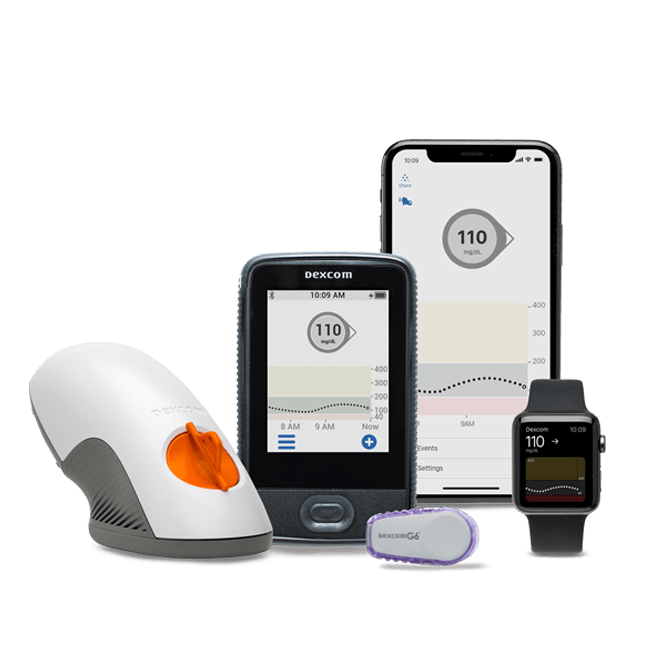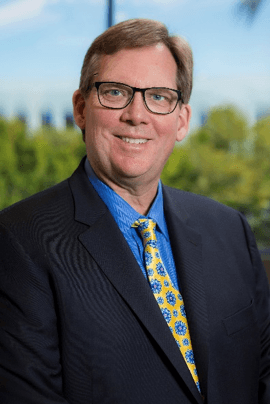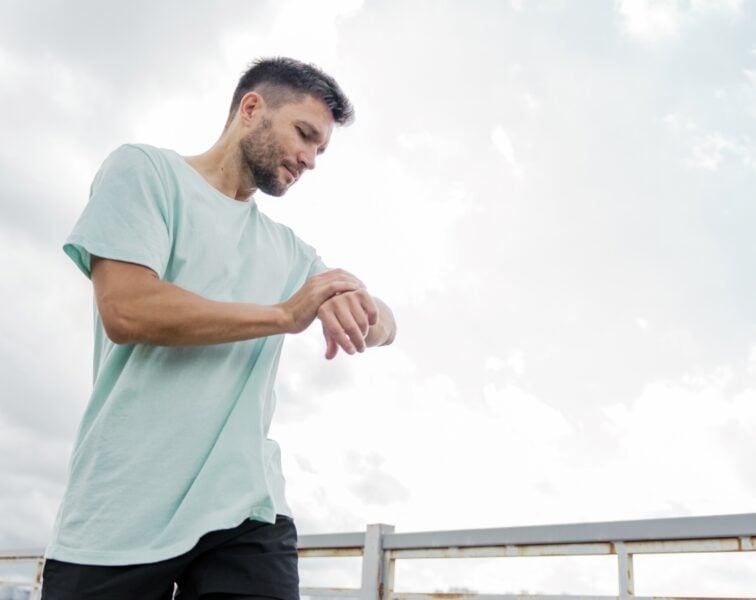In this episode, Kevin Sayer, CEO of Dexcom, discusses the remarkable benefits of a continuous glucose monitor for the diabetes population. Peter shares his own invaluable insights he’s learned from wearing a CGM including the impact of sleep and stress on glucose as well as the unmatched power of a CGM to drive behavioral change. Kevin also reveals some of the exciting partnerships and future advancements of their products benefiting not only those with type 1 and 2 diabetes, but also for the growing community of people interested in optimizing health and wellness.
Subscribe on: APPLE PODCASTS | RSS | GOOGLE | OVERCAST | STITCHER
We discuss:
- How they met, and Kevin’s path to becoming CEO of Dexcom [7:00];
- How CGM technology works, and what makes Dexcom’s G6 the best model yet [15:15];
- Challenges of working in the US healthcare system and getting CGM insured [21:45];
- Developing an even smaller, more user-friendly, and less costly product while maintaining performance and accuracy [33:15];
- Next thing on the horizon for type 1 diabetes patients [43:30];
- The incredible accuracy of the G6, recommended over-the-counter glucose meters, and the unmatched power of CGM to drive behavioral change [48:15];
- Software improvements for type 2 diabetics, and the remarkable benefits of real-time feedback for driving behavioral change [58:15];
- Dexcom vs. the competitors, the less invasive options, and the fundamental problems needing to be solved with CGM technologies [1:07:00];
- The cost of CGM, why you need a prescription, and when might there be a OTC option? [1:12:00];
- Smartwatch integration, bluetooth technology, and exciting collaborations and partnerships [1:22:00];
- Future places for CGM: Hospitals, nutrition apps, general health and wellness, and more [1:27:15];
- Dexcom’s unique company culture [1:34:15];
- Parenting advice from Kevin [1:37:30];
- Lessons learned through failures and success [1:38:45]; and
- More.
DISCLAIMER: The Dexcom G6 Continuous Glucose Monitoring System (Dexcom G6 System) is a real time, continuous glucose monitoring device indicated for the management of diabetes in persons age 2 years and older. Do not use the G6 if you are pregnant, on dialysis, or critically ill. It is not known how different conditions or medications common to theses populations may affect performance of the system. G6 readings may be inaccurate in these populations. The system requires a prescription (Caution: U.S. law restricts the sale of the G6 Mobile to sale by, or on the order of, a physician). Contact Dexcom Toll Free at 877-339-2664 or https://www.dexcom.com/safety-information for detailed indications for use and safety information. Future devices are not available for sale in the United States (Caution: Investigational device. Limited by U.S. law to investigational use).
This presentation contains “forward-looking” statements that are based on our management’s beliefs and assumptions and on information currently available to management. Forward-looking statements include all statements other than statements of historical fact contained in this presentation, including information concerning our business strategy, objectives and opportunities; market sizes and potential market growth opportunities; future business and product development; product goals, attributes and performance; the successful integration of acquisitions and commercial relationships; the successful completion of, and timing expectations for clinical trials. Forward-looking statements are subject to known and unknown risks, uncertainties, assumptions and other factors that may cause our actual results, performance or achievements to differ materially and adversely from those anticipated or implied by our forward-looking statements, including, but not limited to, those related to the successful development, regulatory approval and commercialization of our products; the design, implementation and outcomes of our clinical trials; the outcomes of meetings with regulatory agencies; our dependence on third party clinical research organizations, manufacturers and suppliers; market acceptance of our potential products; our ability to develop and maintain collaborations and license products and intellectual property; the impact of competitive products and therapies; our ability to manage the growth and complexity of our organization; our ability to maintain, protect and enhance our intellectual property; and our ability to continue to stay in compliance with applicable laws and regulations. You should refer to the section entitled “Risk Factors” set forth in our Annual Report on Form 10-K, Quarterly Report on Form 10-Q and other filings we make with the Securities and Exchange Commission (SEC) from time to time for a discussion of important factors that may cause our actual results to differ materially from those expressed or implied by our forward-looking statements. You should not rely upon forward-looking statements as predictions of future events. Neither we nor any other person assumes responsibility for the accuracy and completeness of the forward-looking statements. The statements in this presentation are accurate as of September 21, 2018, and we undertake no obligation to update any forward-looking statements after the date of this presentation except as may be required by law.
This presentation also contains estimates and other statistical data made by independent parties and by us relating to market size and growth and other data about our industry. These data involve a number of assumptions and limitations, and you are cautioned not to give undue weight to such estimates. Projections, assumptions and estimates of the future performance of the markets in which we operate are necessarily subject to a high degree of uncertainty and risk.
In addition to our filings with the SEC, press releases, public conference calls and webcasts, we use our website (www.dexcom.com) as channels of distribution of information about our company, our products, our planned announcements, our attendance at upcoming conferences and other matters. Such information may be deemed material information and we may use these channels to comply with our disclosure obligations under Regulation FD. Therefore, investors should monitor our website in addition to following our SEC filings, press releases, public conference calls and webcasts.
Without limitation, this presentation does not constitute an offer, an invitation to offer or a recommendation to enter into any transaction, an offer to sell or the solicitation of any offer to buy any securities, and its contents should not be interpreted as investment, legal, tax, medical or any other advice.
Get Peter’s expertise in your inbox 100% free.
Sign up to receive An Introductory Guide to Longevity by Peter Attia, weekly longevity-focused articles, and new podcast announcements.
How they met, and Kevin’s path to becoming CEO of Dexcom [7:00]
How they met:
- Peter and Kevin met on an airplane
- Bonded over watches
- Spoke for an hour before Peter realized Kevin worked at Dexcom
- Now Peter is a big proponent of Dexcom, currently wears the G6 CGM
Before Dexcom:
- Worked as a finance person with Medtronic starting in 1994
- Medtronic designed the first continuous glucose monitor
- Left Medtronic, and worked for a drug-eluting stent business called Biosensors International as the head of the US operations and CFO of the entire company
- Moved his family from LA to San Diego in 2011 to be CEO of Dexcom
How CGM technology works, and what makes Dexcom’s G6 the best model yet [15:15]
- Designed to measure glucose only
- Small thin wire (like a human hair) inserts into subcutaneous tissue
- That wire and those membranes then generate electrochemical signal that goes up into a transmitter that sits on top of the sensor
- And inside that transmitters is an algorithm that converts that electrochemical signal to a glucose value
- The key is it’s an enzymatic reaction which means that it can be done without multiple washes ⇒ Which means this device can’t measure lipoproteins or insulin
How deep is that that little filament that sits inside the patient?
- With the new Dexcom G6 model
- Half inch under the skin
- The insertion technology of the sensor, it goes in with a needle and the needle comes out
- The needle is in your skin less time that it takes a hummingbird to flap its wings a couple of times so a patient doesn’t feel it
- And then the sensor rests in the subcutaneous tissue and you really don’t feel that sensor at all
- Most CGM (and even the previous Dexcom G5) are a bit uncomfortable
- Both Kevin and Peter have had patients who just can’t bring themselves to stick the needle in
What makes the G6 so accurate compared to previous models and competitors?
- New membrane technology
- New algorithm

Figure 1. The Dexcom G6 CGM. Image credit: dexcom.com
Challenges of working in the US healthcare system and getting CGM insured [21:45]
How many patients in the United States have type 1 diabetes and type 2 diabetes?
{end of show notes preview…}
Would you like access to extensive show notes and references for this podcast (and more)?
Check out this post to see an example of what the substantial show notes look like. Become a member today to get access.

Kevin Sayer: Chairman, President and Chief Executive Officer DexCom, Inc.
Kevin serves as the Chairman of the Board of Directors, President and Chief Executive Officer at DexCom, Inc. As Chief Executive Officer, Kevin has direct responsibility for strategy and operations. Prior to assuming the CEO role in 2015, Kevin served as DexCom’s President and Chief Operating Officer. In this role, he led DexCom’s core functions responsible for designing, developing and commercializing the company’s Continuous Glucose Monitoring (CGM) systems.
Before joining DexCom in 2011, Kevin served as Chief Financial Officer of Biosensors International, a medical technology company focused on the development, manufacturing and commercialization of medical devices used in interventional cardiology and critical care procedures. Prior to that, he was the CFO of MiniMed, Inc. from 1994 until its 2001 acquisition by Medtronic, Inc. In this role, he was responsible for the company’s finance, accounting, investor relations and treasury functions.
Kevin received his Master’s and Bachelor’s degrees in Accounting and Information Systems from Brigham Young University.



